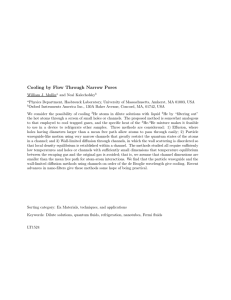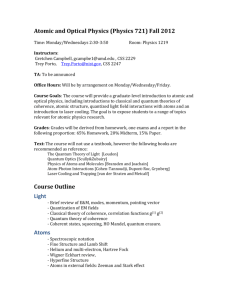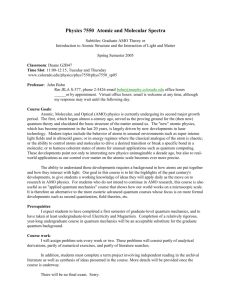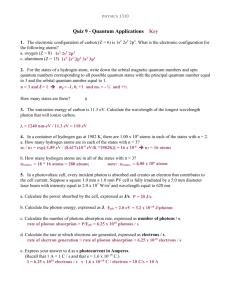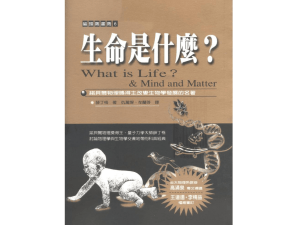Phys 518 Homework Set III
advertisement
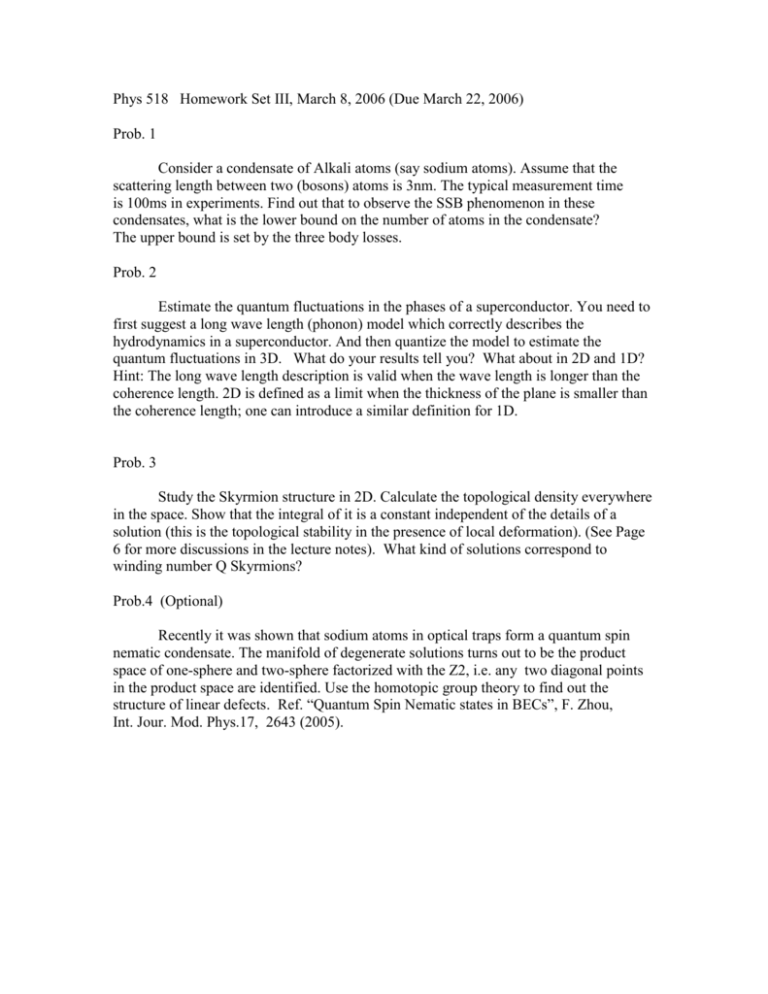
Phys 518 Homework Set III, March 8, 2006 (Due March 22, 2006) Prob. 1 Consider a condensate of Alkali atoms (say sodium atoms). Assume that the scattering length between two (bosons) atoms is 3nm. The typical measurement time is 100ms in experiments. Find out that to observe the SSB phenomenon in these condensates, what is the lower bound on the number of atoms in the condensate? The upper bound is set by the three body losses. Prob. 2 Estimate the quantum fluctuations in the phases of a superconductor. You need to first suggest a long wave length (phonon) model which correctly describes the hydrodynamics in a superconductor. And then quantize the model to estimate the quantum fluctuations in 3D. What do your results tell you? What about in 2D and 1D? Hint: The long wave length description is valid when the wave length is longer than the coherence length. 2D is defined as a limit when the thickness of the plane is smaller than the coherence length; one can introduce a similar definition for 1D. Prob. 3 Study the Skyrmion structure in 2D. Calculate the topological density everywhere in the space. Show that the integral of it is a constant independent of the details of a solution (this is the topological stability in the presence of local deformation). (See Page 6 for more discussions in the lecture notes). What kind of solutions correspond to winding number Q Skyrmions? Prob.4 (Optional) Recently it was shown that sodium atoms in optical traps form a quantum spin nematic condensate. The manifold of degenerate solutions turns out to be the product space of one-sphere and two-sphere factorized with the Z2, i.e. any two diagonal points in the product space are identified. Use the homotopic group theory to find out the structure of linear defects. Ref. “Quantum Spin Nematic states in BECs”, F. Zhou, Int. Jour. Mod. Phys.17, 2643 (2005).


